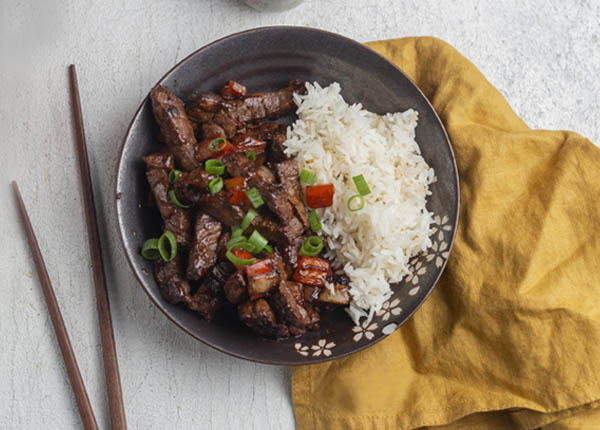
The huge diversity – the first word strikes our mind when we think of Asian cooking. It impossible to portray in a couple of sentences about the flavour of India, Thailand, China, Japan, Korea, and Vietnam. Dishes from nations like Malaysia, Singapore, Indonesia and Cambodia have No less significant than the above. One thing is sure unquestionably everyone will track down something for themselves among a wide range of delightful flavours.
We can characterize Cuisine as a way of cooking and custom related with a particular culture. Asia is the largest continent in the world covers different cultures and different cuisines. To some extent the major local cooking styles are East Asian, South Asian, Southeast Asian, Central Asian and Middle Eastern foods.
Apart from the regional distinction, these diversity of food and taste Asian food shares a few features. Ingredients like Rice, Ginger, Garlic, Tofu, Chilies, Dried Onions, Soy and Sesame seeds are used practically in all Asian food. Cooking methods like Steaming and Stir searing are similar in every Asian cuisine restaurants.
Rice is a staple food ingredient in every Asian food. Different varieties of rice are famous in different regions. Basmati is a well-known rice assortment in subcontinents especially in our India. While long grain rice is famous in China and short grain in Japan and Korea. Curry dishes originated from South Asian countries are also common in Southern, Western and South-eastern regions.
East Asian Cuisine
Chinese, Japanese, Mongolian and Taiwanese Cuisines together known as East Asian Cuisine. Being one of the most populated regions of the world East Asia has numerous regional cooking styles. Rice, Noodles, Soybeans, and Seafood are most used staple food in East Asian cuisine.
South Asian Cuisine
Food from the Indian sub-continent makes the South Asian cuisine. Food in this part is enhanced and flavoured with spices and herbs. Seasoned Oil and Ghee are stapled component in South Asian cooking. Yogurt and Coconut milk used for South Asian curries. Chicken, Mutton, and Fish are the common meats used. Beef and Pork are accessible just in some part of the continent since these meats are considered as taboo for certain religious community.
Southeast Asian Cuisine
Southeast Asian food varieties underscore on light dishes with aromatic flavours of spices like lime, coriander, and basil. Going to the Far East, the Fish sauce is replaced with Soy sauce. Ingredients like Galangal, Tamarind and Lemongrass are more commonly used and prepared in normal cooking procedure on stir frying, steaming or boiling.
Central Asian Cuisine
Central Asian Nations have fundamentally the same as cooking styles. They share many highlights with their neighbouring cuisines of Western and Eastern Asia. Horse meat and lamb are commonly used meat in this region. Fermented dairy product called Kumis is a popular beverage among Turkic peoples.
West Asian or Middle East Cuisine
West Asian Cuisine is the Cuisine of the Middle East countries excluding Egypt. The cuisine of this region is distinctive in its own particular method. A few frequently used ingredients are olives and olive oil, honey, sesame seeds, dates, sumac, chickpeas, mint, and parsley. Wheat and rice supports any meal in West Asian cooking.
Butter and clarified butter are the most widely used cooking medium. Olive oil is utilized rather than spread in some region. Sheep and lamb have forever been the meat of choice in each Middle East dinner. The cooking method of meat is grilled or kebabs. Pork is prohibited in Middle East Country’s as it’s a strictly forbidden.
North Asian Cuisine
North Asia comes under Russian Federation Hence North Asian cuisine can be firmly connected with Russian cuisine. Nevertheless, Siberian regions have unique and significant food, for example, the Yakuts a yamai cuisine.
Reasons Why Asian Cuisine Is Good for You
Whether Indian, Malay or Chinese, a few regions of Asian cuisine are well-known for its nutritious and well-balanced diet. Indeed, researches at the International Food Policy Research Institute also accepted that the Asian plant-based diet – which are locally grown staple grains like rice, starchy roots like potatoes, legumes, beans and different vegetables and fruits to the give protection against numerous chronic diseases.
The following are a couple of healthy Asian food habits you can follow:

1. Have Soup Often : Most soups cooked at home are produced using the bones of chicken, hamburger or fish along with a mix of various vegetables, whether leafy like the spinach, or root vegetables. The mix of vegetables and stock provides you with a concentrated load of nutrients and minerals with every spoon, and that implies even a little part can fill you up quickly. Asian soups are believed to have healing properties for many diseases depending upon its ingredients. Besides the fact that it gives solace during the times of diseases like influenza, fever or a sore throat, it additionally straighten the body and gain immunity. Similar to having a hot cup of tea, the warm temperature of soups is also works well on digestive process.
2. Eat Proportionate Vegetables and Meat: Eat recommended Portion of Vegetables to Meat Ratio. Eat more vegetables than you eat meat. While meat is high in protein, it isn’t the healthiest decision to eat meat for more protein. The Asian eating routine incorporates a healthy balance of meat and vegetables following proportion of three times more vegetables for one portion of meat, which is filling by giving nutrients supplements.
3. Little Plates and Chopsticks: Not just are little plates and chopsticks stylishly satisfying to eat from, yet they additionally assist you with eating more modest segments. Chopsticks are a simple method for keeping away from the digging tool procedure of eating, subsequently diminishing gorging or eating excessively quickly (which both reason swelling in the stomach). Eating more slowly has likewise been shown to be really great for wellbeing, as it brings down the blood glucose level delivered by the body during the absorption cycle.
3. Small Plates and Chopsticks: Not just are small plates and chopsticks which are beautiful or attractive to eat from, additionally they assist you with eating less portion size. Chopsticks are a simple method for keeping away from the shovel tool procedure of eating, which increase overeating and excessively quick which may result in stomach bloating. Eating very slow is really great for health, as it brings down the blood glucose level released by the body during the digestion process
4. Rice Combination: Rice is a staple food in Asian cuisine. Having a feast without rice is practically deficient! Selecting to combine the type of rice served will give you substantially more supplements in your diet. Dark, brown, red, or even purple rice is healthfully denser than white or brown – bringing about a less starchy diet which converts less sugar change and lower calorie consumption.
6. Spices and flavours: Not just do these give dishes a more extravagant flavour and taste, spices and flavours additionally known to ease normal wellbeing sicknesses and advance better broad wellbeing.
5. Seafood: Normal Asian diet practice of eating fish almost every day. Fish gives probably the highest measure of healthy oils and lean protein in a serving compared with different sorts of meat. Whether it’s fried, filleted, steamed or cooked in a curry, load up on the fish dishes!
6. Spices and Herbs : Not just do these give dishes a more extravagant flavour and taste, spices and herbs additionally known to ease common health problems and promotes immunity and broad wellbeing.
Asian food sources and eatery habit helps around keeping the diet in balance. It isn’t just about what you eat yet in addition how you eat and the amount you eat; perceiving that great wellbeing and health is a lifestyle that reaches out past food yet into active physical activity like yoga. Maybe we can initially begin by following these healthy food habits as the first stage to living a more dynamic and healthy lifestyle.
Health Benefits of Asian Cuisines
Asian cuisine offers a more extensive range of healthy and nutritious choices of food range, including a blend of enjoyably exciting spices, fresh ingredients including low fat and protein count. When considering on food, and good healthy food, traditional Asian cuisine comprises with numerous cruciferous vegetables like cauliflower, cabbage, broccoli, and bok choy leaves, and each of them are helpful to bring-down the risk of numerous diseases. Other than these, soybeans are additionally consumed in variety of Asian food plan, right from soymilk, to various kinds of soups and tofu. They compensate for the red meats and are high on protein. Wholegrain like brown rice and barley are likewise common in Asian diets regimens offer various health benefits including bringing down of the glycaemic load.

